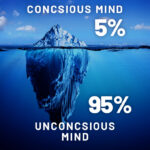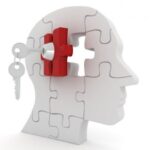Over the past few years we have offered a variety of information on the mental aspects of dance training and performance in Dance Teacher Now. These articles described many techniques that can be used to develop dancers mentally so they may perform their best. However, it may have been unclear how these methods could be combined into an organized program of mental training. Consequently, this article will look briefly at the major psychological factors that have been addressed and how they can be incorporated into the daily training regimen of dancers.
Any preparation for dancing, whether physical or mental, must start long before the stage performance. The basic mental skills should be an integral part of the dance program. Mental areas to be worked on include self-confidence, anxiety, motivation, and mental imagery. What is nice about the strategies we have written about is that they are simple, can be used during regular training, do not take a lot of time, and are fun. A helpful way to begin this process is for the teacher to take the lead in organizing and implementing the plan described below.
Motivation
The foundation of any training program should involve goal-setting. Research has shown that people are more motivated and work harder when they have clearly defined objectives toward which to work. Dance teachers should spend time with their dancers developing a series of goals for their training.
In addition, training is much more motivating when it is fun, interesting and meaningful. There are few things worse for motivation than routine, monotonous exercises. Variety is stressed here.
Self-Confidence
Dance teachers should have two goals when teaching new skills. They must teach the technical and physical components for the proper execution of the skill and instill in their dancers the self-confidence that they can perform the skill in any situation.
At a general level, as significant role models, teachers may help the self-confidence of their dancers by exhibiting a positive, enthusiastic attitude during training, rehearsal, and performance. Such an attitude tends to be contagious, causing dancers to adopt and demonstrate similar feelings about themselves.
More direct influence on self-confidence can be exerted by dance teachers with the use of positive reinforcement. Regular encouragement increases the likelihood that dancers will develop positive attitudes and behaviors that will result in successful performances. Teachers must also discourage their dancers from making negative or ambivalent self-statements. Techniques that we discussed in earlier articles include positive thinking and thought-stopping.
Anxiety
Teaching relaxation techniques is a valuable tool that dancers can use. Breathing and progressive relaxation can be included in the training program. Also, group discussions on irrational thinking and dealing with the unexpected can sensitize dancers to potential problems in these areas.
Mental Imagery
Mental imagery is one of the most powerful techniques for developing good mental skills. Imagery can be included into training in several ways. Ten minutes can be set aside a few days a week for imagery sessions. Beforehand, teachers can prepare a scenario through which to guide their dancers.
Imagery can be incorporated into training by the dancer. After the teacher gives dancers feedback, they can imagine themselves making the correction. In addition, before and after class, dancers can once again mentally rehearse what they are working on.
Mental Skills and the Daily Training Regimen
The mental skills mentioned above can easily be included in the normal daily preparations of dancers.
1. Arrival at the studio:
Upon arrival at the studio and before class begins, students can do their mental warm-up along with their physical warm-up. Self-confidence can be developed by repeating positive self-statements to themselves. Breathing and progressive relaxation can be used to master anxiety. Mental imagery can be employed to rehearse what they will be practicing in the upcoming class and improve concentration on those skills to be worked on.
2. During class:
Following feedback from the teacher, students can reinforce the instruction they are given by mentally rehearsing the skill. This strategy can also be used just prior to practicing the skill to generate a positive image and focus concentration. In addition, positive self-statements may be repeated if negative thoughts arise and breathing and relaxation can be used if students become anxious.
3. After class:
In order to make mental training as regular as dance training, teachers can organize progressive relaxation and mental imagery sessions for the dancers several times a week.
4. Group discussion:
Another value strategy for teachers is to have periodic discussions with dancers about issues that of importance. Topics that might be addressed include getting that first lead role, the frustrations of learning new skills, handling parental pressure, and dealing with injuries. These discussions provide an excellent forum for teachers to offer useful information to the dancers. In addition, they allow dancers to raise issues of concern to them and express thoughts and feelings that they have related to their dance experience.
5. Individual meetings:
As discussed in previous articles, responding to the individual needs of each dancer is important to the continued enjoyment, motivation, and growth of the dancer. Consequently, scheduling monthly meeting with each dancer can allow the teacher and the dancer to monitor progress, air concerns, and keep apprised of the dancer’s personal and professional development.
Conclusion
By organizing the mental skills that have been discussed into an systematic program and incorporating them into daily dance training, teachers can be sure that they are creating an atmosphere that will enable their dancers to maximize their ability. More importantly, they can be confident that they are doing what they can to foster positive attitudes and increase enjoyment, satisfaction, and interest that will motivate their dancers to continue participating for many years to come.






